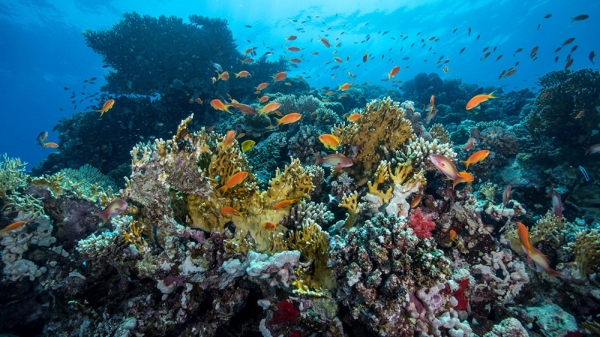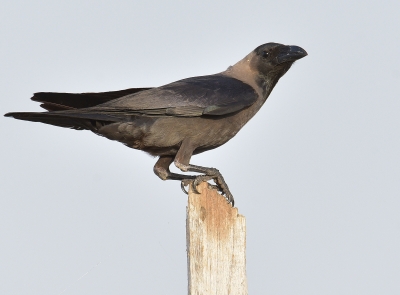
The Red Sea Decade Expedition is a scientific journey launched by the National Center for Wildlife in the Kingdom of Saudi Arabia in February 2022. It aims to conduct the first comprehensive survey of Saudi marine environments in the Red Sea.
Objectives of the Red Sea Decade Expedition
The expedition aimed to study the diversity and distribution of corals in the deep areas of the Red Sea, investigate biodiversity from the smallest organisms to marine mammals, examine marine life in both deep and mid-depth waters, marine mammal species, habitat diversity, the chemical and physical properties of the Red Sea, and map the seabed in coastal and deep-sea areas.
Route of the Red Sea Decade Expedition
The Red Sea Decade Expedition began at Jeddah Islamic Port west of the Kingdom. It started in Afifi area of the southern Red Sea and extended northward to the Gulf of Aqaba. Over nineteen weeks, the expedition achieved several significant discoveries, including blue holes in the southern Red Sea and the identification of four previously undocumented coral species worldwide.
Details of the Red Sea Decade Expedition
The journey involved 126 researchers from eighteen nationalities aboard two research vessels: the international vessel 'Ocean Explorer' and the national vessel 'al-Azizi.' The expedition was conducted in collaboration with: King Abdullah University for Science and Technology (KAUST), King Abdulaziz University, King Fahd University of Petroleum and Minerals, NEOM, Amaala, and the Red Sea Projects. Key outcomes of the expedition included collecting around eight hundred diverse biological samples, mapping 62,758 km² of the seabed, conducting forty-four manned submersible exploratory dives, performing 133 remotely operated submarine explorations, conducting an aerial survey covering 3,783 km², collecting 2,048 biological samples for 'DNA' testing, and extracting 235 core samples of basic sediments from the seabed and 150 live coral reef samples.
Discoveries of the Red Sea Decade Expedition
The researchers of the Red Sea Decade Expedition discovered the existence of blue holes in the Kingdom. They identified approximately twenty blue holes along the southern Saudi coastline of the Red Sea. These ecosystems are unique geological formations rich in biodiversity, home to a wide variety of marine species, including sea turtles, fish, marine mammals, and invertebrates.
Researchers also discovered DNA evidence confirming the presence of the great white shark, along with a variety of crustaceans beneath the sea, and many previously undiscovered species. Live and rare marine creatures were observed for the first time in the depths of the sea. Ancient active vents were discovered near the northern shores of the Farasan Islands, supporting unique marine life and microbial structures dating back thousands of years. The Red Sea was also found to host an active community of deep-sea fish and exhibited significant plankton activity on its seabed.
Among the findings of the Red Sea Decade Expedition is the presence of vibrant coral reefs, which promote the flourishing of diving activities, along with saltwater lakes. Aerial surveys using helicopters identified 491 marine giants, including whales, dolphins, various shark species, and stingrays.
Sharks were observed diving to greater depths in warm waters, where the minimum temperature was twenty-one °C. In addition, it was discovered that 'Bryde's whales' breed in the Red Sea, after being observed with their calves, whereas it was previously believed that they were transient creatures. The expedition also observed an unusual behavior in dolphins, as they, along with their young, retreat to blue holes to seek shelter from attacks by predatory fish and whales. Meanwhile, marine animals on the seabed of the Red Sea prey on deep-sea fish during their migration.
The expedition also uncovered coral species living at depths exceeding one thousand m, capable of surviving extended periods without oxygen and in temperatures as high as thirty-three °C. The expedition created a catalog of the genetic makeup of microorganisms in the Red Sea, highlighting potential applications in the pharmaceutical industry, energy, food production, and cosmetics. Another remarkable discovery was the presence of carbon-based bioluminescence in the depths of the Red Sea. DNA analysis revealed three types of microbial bacteria in the composition of these carbon illuminations.
Researchers of the Red Sea Decade Expedition linked DNA sequences and assessed the ages of Red Sea sediments to reconstruct biodiversity changes over the past 1,800 years, providing an evaluation of these changes. The expedition also highlighted the volcanic processes that shape the Red Sea and support its biodiversity.
Related quizzes
Related articles


